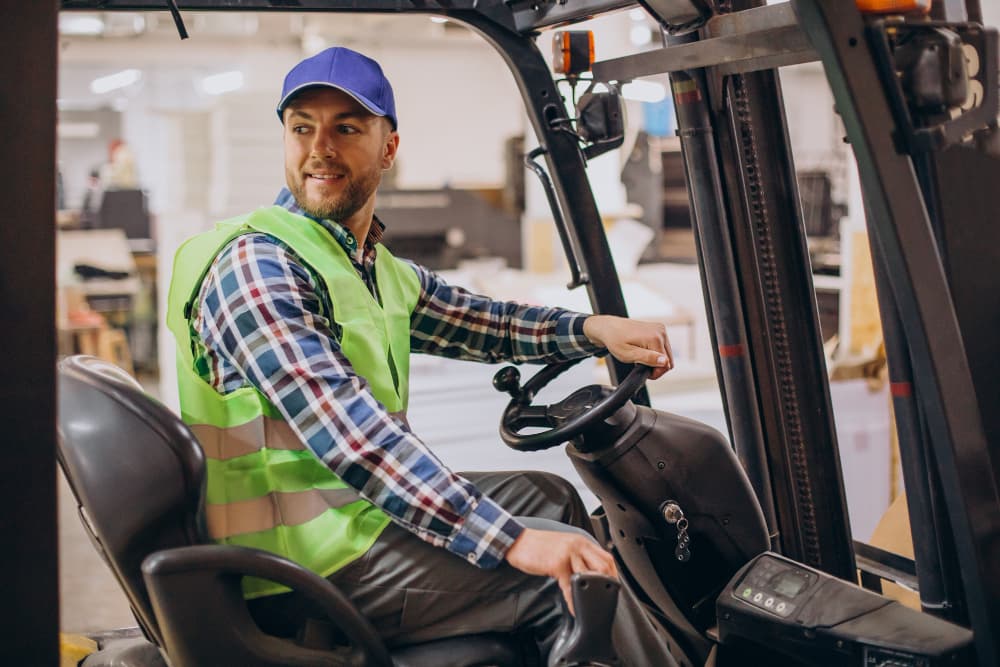
If you’ve ever worked on a factory floor, in a warehouse, or on a construction site, you already know this: handling heavy materials isn’t just physically demanding—it’s risky. Every day, tons of equipment and inventory are moved from one point to another, and if done without proper caution, a simple task can turn into a serious hazard.
Over the years, we’ve seen how quickly things can go wrong when people take shortcuts—someone lifting a load the wrong way, a driver turning a corner too fast, or even a pallet stacked just a little too high. The good news? Most of these accidents are entirely preventable.
Here are five steps that can make a real difference when it comes to keeping your workers safe and your workflow running smoothly.
- Start With the Right Mindset
Before we get into tools or techniques, it’s important to talk about attitude. Safety isn’t just about rules—it’s about awareness. A worker who pauses to assess a situation before acting is far less likely to make a costly mistake.
Too often, people get comfortable or complacent, especially if they’ve done the same job for years. That’s when problems happen. Heavy loads demand respect, whether it’s your first day or your tenth year on the job. This is exactly why ongoing heavy material handling training is so valuable—it reinforces the idea that safety is a daily habit, not a one-time session.
- Know What You’re Handling
It might sound basic, but knowing what you’re about to move matters. Is the load unstable? Is it heavier than it looks? Can it be lifted manually, or does it need mechanical assistance?
We’ve seen teams try to muscle through lifting tasks that required machinery, either because they were short on time or didn’t want to wait for help. That mindset often leads to injuries, equipment damage, or both.
In training programs, workers are taught to evaluate materials before touching them. They’re taught to think about weight distribution, balance, fragility, and even how humidity or temperature might affect a load. These aren’t things you just guess at on the job—they’re learned skills, and they save a lot of trouble down the line.
- Use the Right Equipment, the Right Way
It’s not just about having the right tools—it’s about knowing how to use them properly. A forklift, pallet jack, crane, or hoist can be incredibly helpful—but in the wrong hands, they can also be dangerous.

This is where proper driver training comes into play. A well-trained driver understands their equipment’s limits, knows how to react in tight spaces, and takes care of the machine itself. They’re not racing through the warehouse or ignoring blind spots. They’re thinking three steps ahead.
Good driver training doesn’t just teach someone how to steer or lift—it builds judgment. And that kind of judgment only comes from structured, hands-on learning combined with real-world awareness.
- Keep the Workspace Clean and Clear
Here’s something many companies overlook: cluttered spaces lead to accidents. You can have all the right training and equipment, but if aisles are blocked, floors are slippery, or materials are stacked haphazardly, it’s only a matter of time before someone gets hurt.
A safe material handling environment is an organized one. That means designated paths for vehicles, proper lighting, clearly marked zones, and zero tolerance for “temporary” pile-ups.
Supervisors need to walk the floor regularly and correct unsafe setups. Workers need to take responsibility for keeping their stations clean. It’s a team effort—and it’s essential.
- Train. Then Train Again.
Let’s be honest—no one remembers everything from a two-day course six months ago. That’s why regular training refreshers are so important. People forget details. They develop bad habits. New machines arrive. Workflows change.
Ongoing heavy material handling training and driver training ensure that your team stays sharp and up-to-date. It’s not just about ticking boxes for compliance—it’s about actually protecting your people and your productivity.
We’ve worked with companies where a simple refresher course revealed a long-standing safety issue no one had noticed. What is the cost of the training? Minimal. The cost of not doing it? Potentially massive.
Final Thoughts: Safety Is a Long Game
Material handling safety isn’t about perfection. It’s about consistency. The most successful teams aren’t the ones that never make mistakes—they’re the ones that learn, adjust, and stay focused.
When workers feel supported, when they’re trained regularly, and when the workplace encourages smart choices, good things happen: fewer accidents, less downtime, and more peace of mind for everyone involved.
If you’re looking to strengthen your safety culture, consider starting with updated heavy material handling training or a driver training program tailored to your specific operations. The investment is small. The return is priceless.
Looking for help designing your next training session?
Visit https://rtitbindia.com and see how we can help make your workplace smarter, safer, and stronger.

